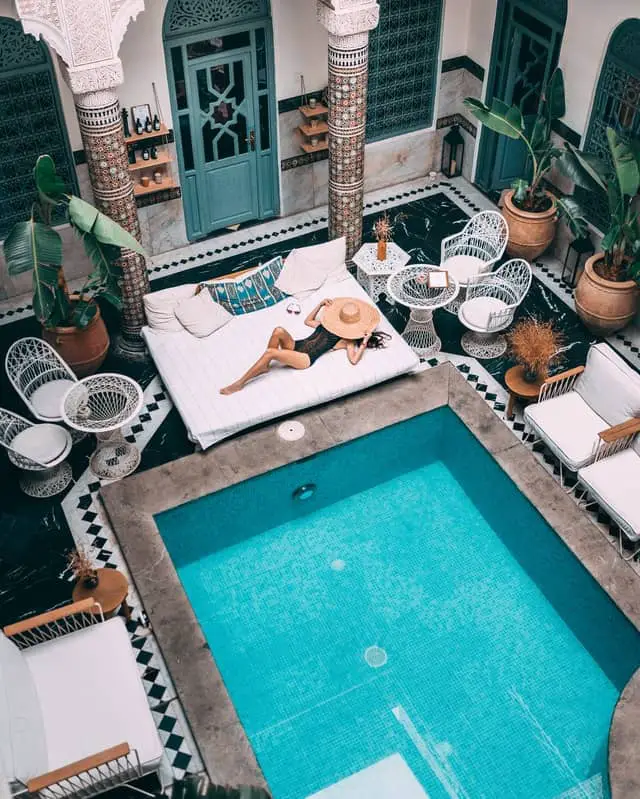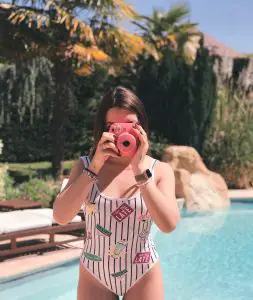Introduction
As fashion sustainability trends take control of the market, many fashion companies are asking themselves whether luxury brands will have a place in the future of fashion.
This concern is connected to the fact that many luxury fashion brands have been trying to broaden their customer audience by using more inclusive brand strategies.
As luxury has been subject to democratization, some of the brands that were traditionally more inaccessible are now making the brand available to broader and broader categories of customers.
This can happen through a variety of strategies, which include:
- Creating diffusion lines to broaden collections and lower prices.
- Developing merchandising lines, which takes advantage of masstige (mass-prestige) products.
- Creating collaborations with vertical retailers that can lead to the creation of capsule collections and limited editions.
- Taking advantage of ecommerce platforms with commodity products to attract lower-budget customers who are still in love with the brand.
This is all good, but aside from the fact that strategies like the ones we listed can lead to brand dilution, all of these approaches to luxury democracy are posing serious issues connected to overproduction and overconsumption.
What can be done to make luxury better aligned with sustainable goals and the necessary transformations that the fashion industry requires?
In this post, we’re looking at three possible solutions that can help luxury brand managers take on this challenge.
Ready? Let’s get started!
Making Luxury Sustainable By Increasing Profit Margins and Decreasing Production Volumes
Companies are making money and generating profits as the result of two possible situations: they are either selling more products or they are selling the same amount at a better margin.
The first approach to making luxury sustainable is to make luxury exclusive again. This would mean that if from the one end, brands would lose some of the volume efficiencies connected to scale economies, on the other, they would be selling higher-profit products to fewer, more loyal customers.
To some extent, this is an approach that would allow fashion firms to revert back to what made luxury products attractive in the first place and re-instate the elements which are at the heart of luxury itself. Some of them include:
- Excellence in quality, because of superior craftsmanship
- Experiential and emotional dimensions connected to ownership
- Timelessness, as a form of beauty and elegance that transcends seasonality
- Investment value and heirloom connected to ownership
As a result of these features, luxury brands can establish higher or premium pricing.
As a consequence, fashion firms would reduce production, and because of the exclusiveness and aspirational value of luxury, consumption would be limited to a smaller audience of very loyal users.
But this is not the only way in which luxury products can be sustainable. Alternative approaches are possible too. Let’s look into them.
Making Luxury Sustainable By Developing New Business Models
This is an alternative approach based on the idea that luxury can be transformed from an ownership dimension to a more experiential dimension.
An example of this approach is provided by Rent The Runway, an American fashion company, whose business model is addressed in detail in this video post.
The model that the company suggests is based on the opportunity to provide their customers with access to luxury clothing, from top designers at the cost of a small rental fee.
This approach is very effective and functional towards those customers who, for professional needs, are required to dress elegantly for formal occasions, but they would be unlikely to wear the same outfit twice.
By providing rental services, the business is capable of satisfying the needs of customers who will save time and money to rent a garment that will be used and re-used by other customers. This approach allows customers to keep their high-consumption habits, but with a reduced impact on the environment.
Rent the Runway is one example, but many fashion firms are moving towards share economies and collaborative consumption in order to pursue the diffusion of a different approach towards fashion, which does not revolve around one-time use of clothing.
Another example of this approach is provided by Vestiaire Collective, a fashion firm focused on providing a marketplace for luxury pre-owned items.
We analyze the company in more detail in this article.
The platform provides the ultimate opportunity to access ownership of luxury products by buying second-hand products.
This approach is certainly sustainable as the product life is extended by allowing used garments to find a new closet, and allowing luxury goods to fulfill aspirational goals for customers who are looking for a first ownership experience at a more accessible price point.
That’s not it! More to come in the next paragraph.
Making Luxury Sustainable By Incentiving Product Life Cycle Accountability
The third approach luxury brands can take to make their products more sustainable is not directly under their own control.
At least ⅓ of sustainability efforts fall into the responsibility of luxury customers.
It’s up to them in fact to make the correct use of a product and dispose of it correctly.
But what can brands do to incentivize correct behavior?
A lot can be done. We discuss a lot of different approaches and strategies in this article: How Can Brands Influence Customer Behaviour?
There are essentially three potential levels of action:
- Influence customers through your brand communication strategy (Awareness Stage). This is what many brands are doing to get started on sustainability by developing a strong message. If from one end this can help raise awareness about the environmental concerns which are at the heart of fashion and luxury, on the other hand, it can be easy to talk the talk but not walk the walk. This issue is also referred to as greenwashing.
- Influence customers through social media (Evaluation Stage). As social media is a virtual space where customers project their own values and beliefs, brands can use social platforms to induce customers in sustainable behaviors as unconcern for the environment is now considered a reprehensible attitude.
- Influence customers through in-store incentives (Purchase Stage). Finally, as customers approach a purchase, incentives connected to saving time, or saving money could be effective ways to push customers into acknowledging the carbon footprint of their shopping.
A lot can be done in this context, and fashion and luxury firms are finding new and interesting ways to condition our behavior towards sustainability.
One of the most brilliant examples is provided by Nudie Jeans and their 6-month-no-wash challenge. If you’d like to read more about this here’s an article to look into.
There you have it. Now that we’ve touched all relevant bases, it’s time to draw our conclusive remarks.
Conclusions
As we’ve discussed, luxury can be sustainable, but brand managers need to really think outside the box in order to create products that follow new luxury metrics and impact their customers’ life to the point of changing their behavior.
In this post, we’ve seen how luxury can be sustainable if:
- Brands forsake quantity and pursue quality. This can be done by reverting back to traditional luxury values connected to real aspirational products which by definition are not easy to access because of exclusive distribution, limited quantity, superior quality, and premium pricing.
- Brands develop new business models, which revolve around collaborative consumption. Brands have to develop new approaches to “solving customers’ problems” by making luxury a collaborative consumption experience so that consumer overconsumption can be limited by collective use.
- Brands need to work towards influencing consumer behavior so that buyers become more accountable for the products they buy. This could happen in different ways, spanning from recycling to upcycling to the creation of circular economies.
On top of this, brands can also work towards building sustainable supply chains, to make sure their business partners take on this issue as well.
We address this topic in further detail in this article: 5 Ways Fashion Brand Can Create a Sustainable Supply Chain.
There you have it. By following these three different approaches, luxury can be sustainable.
There are no simple strategies to implement, but there is an opportunity to push the luxury industry into the right track of sustainability for the benefit of both customers and brands.
If you’re interested in luxury and sustainability, don’t hesitate to look into our blog, you’ll be able to find a broad selection of articles to help you navigate the fashion industry.
If you’re looking for an opportunity to deepen your understanding and knowledge of the practices of sustainable fashion, don’t hesitate to take a look at our course “The Sustainable Fashion Industry“. Our short and to-the-point, online class covers a wide range of topics spanning from sustainable business models to strategies to lower your carbon footprint. Here’s a link to the course, if you use the discount code BLOG20 at checkout you can access a 20% discount. Enjoy!








